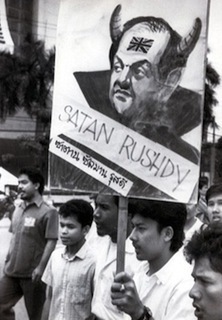Brendan I. Koerner's Blog, page 14
October 1, 2012
Here Comes the Boom

Our species ability to control avalanches remains more art than science, which makes sense given the challenges involved. A thousand different variables play into each situation, ranging from the constitution of the snow to incremental changes in air temperature. On top of that, the means by which we knock away threatening snow—namely, by pelting it with explosives—tends to be a bit unpredictable; a mortar shell, after all, is about the furthest thing away from a scalpel, in terms of exactitude.
Yet we have made great strides in increasing the precision of the ordnance used in avalanche control, as evidenced in this awesome presentation (PDF) from the Wyoming Department of Transportation. Note the evolution in the means by which explosives are delivered to the desired impact points—we’ve gone from vintage howitzers to GazEx pipes to chairlift-like contraptions (above) that can seed a whole mountainside with bombs. The last of these innovations is important because the latest research shows that different parts of the target area should be treated with different amounts of explosives, since snow pack can vary greatly within small areas.
The lift is also important because it takes humans out of the equation. That was a major drawback with the old howitzer method.
September 28, 2012
Attention to Detail
Deep apologies for failing to Microkhan much this week, but I have an excellent excuse: I’m in the thick of endnoting my book, which will finally start wending its way through the production process on October 15th. (Street date: June 15, 2013.) Back next week with plenty of tasty victuals; in the meantime, please check out the bonkers scene at this week’s Australia-Papua New Guinea rugby match in Port Moresby. And there are some great photos here from a Kiwi expat who attended the raucous annual event, one that I hope to check out before my time on Spaceship Earth is up—though perhaps I’ll first test my mettle by seeing if I can survive Belgrade’s Eternal Derby.
September 26, 2012
Honor Among Kidnappers

Because it happened during the frenetic final throes of the Cold War, the 1983 abduction of 66 Czechoslovaks by Angolan rebels didn’t get much coverage on these shores. Were a similar event to occur today, though, it would receive immense attention, primarily because of the kidnappers’ rough tactics: In addition to taking children as well as adults, they also forced their captives to march over 800 miles through the bush.
Yet when it came time for the rebels to negotiate the hostages’ release, they were surprisingly honorable—or, perhaps more accurately, true to their stated aims. A Czechoslovak diplomat recalls his dialogue with rebel leader Jonas Savimbi thusly:
Savimbi demanded 300,000 dollars to cover food and board for the year they were holding our men captive. I told him that we could discuss that option, but that in that case we would announce that we had paid a ransom for our captured citizens, and that at that moment UNITA could change from a national liberation movement into a pack of bandits who had kidnapped our citizens for ransom. Savimbi thought about that and said, “Fine, I’ll free them unconditionally, I only ask that none of them return to our country for the duration of the conflict.”
I very much doubt that any current insurgency would be shy about accepting cash for hostages. The revolutionary goal posts have moved quite a bit since the early eighties, toward a more cynical end of the field.
September 24, 2012
The Turkmen Neil Peart
Here at Microkhan, we spend an awful lot of time highlighting all that is wretched about Turkmenistan’s political culture. Heartless autocracy can never fully squelch creativity, however, as the raucous drumming of Rishad Shafi so ably demonstrates. His prog-fusion band Gunesh started out as a mainstay of state-run Turkmen television, but later involved into something much more ethereal and, quite frankly, bizarre. Check out a ye olde music video of Gunesh here; it starts to get good when they journey to sub-Saharan Africa to set up an outdoor recording session.
September 21, 2012
The Art of Getting By

A while back, I explored the athletic means by which American prisoners-of-war coped with confinement in North Korea. That story popped to mind when I recently came across Bill Manbo’s color photographs of life in Japanese-American internment camps, which depict the unfortunate inmates’ efforts to inject some sense of normalcy into their daily lives. Sports was often the centerpiece of those efforts, as camp society coalesced around a regular scheduled of ultra-competitive baseball games. There also seemed to have been some volleyball and hoops in the athletic mix. But the pastime that perhaps mattered most was sumo, because its mere practice doubled as a middle finger to the machine that created the camps in the first place. Grappling wasn’t just a way to pass the time and establish some sense of community; it was a statement of bitter disagreement with the prevailing notion that Nisei had something to be ashamed of.
Another great image here. No idea how they managed to cobble together the ref’s splendid uniform.
September 19, 2012
No Half Measures
 The Ivorian government thinks it’s trying to do its cocoa farmers a solid by guaranteeing export prices, rather than leaving folks at the mercy of a capricious market. But the farmers don’t seem to appreciate the gesture, for the way the prices are apparently being calculated by bureaucrats who don’t understand the country’s :
The Ivorian government thinks it’s trying to do its cocoa farmers a solid by guaranteeing export prices, rather than leaving folks at the mercy of a capricious market. But the farmers don’t seem to appreciate the gesture, for the way the prices are apparently being calculated by bureaucrats who don’t understand the country’s :
Cocoa merchants in Ivory Coast are threatening to block supplies or resort to smuggling if a prolonged dispute with the country’s marketing body over transport costs is not resolved before the start of the new season next month.
The world’s top grower will begin harvesting the 2012/13 crop on October 1 under a sweeping reform aimed at guaranteeing prices for farmers. The Coffee and Cocoa Council (CCC) is due to set both a CIF (cost insurance, freight) export price and a farmgate price, which takes into account taxes and estimated handling costs incurred to get the beans from farm to port.
But merchants say a 51.7 CFA franc per kilogramme over-land transport cost estimate proposed by the CCC in July does not reflect the myriad bribes and illegal taxes they must pay to soldiers, police and customs agents en route to port.
“There are unauthorised roadblocks to pay, but they are not taken into account. We can’t work with 51.7 francs when right now even at 100 francs you’re making nothing,” said Daniel Aka, a cocoa merchant based in Abengourou in the country’s east.
Mr. Aka’s reality check reminds me of Rodney Dangerfield’s economics lesson from Back to School. Systems with numerous (and avaricious) moving parts are never as simple as textbooks make them out to be.
(Image via Cara in Cocody)
September 18, 2012
The Jueteng Economy, Cont’d
Nearly two years ago, I wrote about the Philippines’ futile efforts to stamp out jueteng, an illegal lottery analogous to the mob-run numbers games of yore. At that time, the government was about to launch legal lotteries that would offer higher payouts than their underground counterparts—the same strategy that states in the U.S. used to kill numbers-running in the eighties. After all, why would a consumer risk possible legal repercussions—or, at the very least, seizure of their wagers—in order to vie for a smaller jackpot than is offered through official channels?
While the basic logic of that approach may seem ironclad, however, the legal lotteries have been abject failures:
President Aquino on Monday declared that the controversial small-town lottery would soon be stopped, but he said a new numbers game that would benefit the government and host communities would replace STL.
“STL as an experiment is over,” Mr. Aquino told reporters on the sidelines of his visit here to witness the mass oath-taking of new Liberal Party members in Quezon province. The President said there was a need to stop STL because it failed to stamp out illegal numbers games, particularly “jueteng.”
So what went wrong? An anti-gambling member of the Catholic hierarchy sheds a little light by breaking down the mechanics of jueteng:
Jueteng has an operational structure made up of seven grades: The “cobradores,” who collect the bets; the “cabos,” who supervise the collectors; the “revisadores,” who review the bets placed; “caja,” where the money goes; “boladores,” those responsible for drawing the winning numbers; the “pagadores,” who pay the winning bets; and, the jueteng lords.
Archbishop Emeritus Oscar Cruz said if Loterya ng Bayan would employ the same “hierarchy,” it would be easy for gambling lords to use it as cover for their illegal operations. “It’s correct that STL is out and now they are preparing the Loterya … but it will also be a failure just like the former so they should no longer continue with it,” the prelate said.
There is a great lesson to be learned here about the drawbacks of organizational complexity: Each time you add another layer of supervision, you create a fresh opening for corruption. With so many hands involved in processing the legal bets, it must be fairly easy for jueteng organizations to coax one person to double-dip and handle illegal numbers, too. The only way to stop that from happening is through active law enforcement, but the cops are firmly on the crooks’ payrolls.
The only real solution, of course, is automation, so that bets go directly from consumer to databank without passing through employees who also field jueteng wagers. If there’s a company out there with the IT vision to tackle that project, they need to open a Manila office, stat.
September 17, 2012
Hazerunner
On deadline for my Wired column today, so I must ask that you content yourselves with some Polish rock. A full discography of the band in question, Breakout, can be glimpsed here.
September 14, 2012
Swept Under the Rug
 I make no bones about wearing my Salman Rushdie fandom on my sleeve, even going so far as to use an out-of-context Midnight’s Children quote as the epigraph for my first book. So there was no way I wasn’t going to read the man’s recent New Yorker piece about the years he spent living in fear of assassination due to Ayatollah Ruhollah Khomeini’s extreme distaste for The Satanic Verses. The story was a tough slog at first, in part because of its weird third-person voice, but also because it emanates a slight humblebrag vibe. (The first section, in which Rushdie crosses paths with the cream of Britain’s literary elite, gave me the sense that the article’s title should have been “I Hang Out With Cooler People Than You.”) But once Rushdie hit the backstory on why he chose to write The Satanic Verses, and how his intentions were woefully misunderstood by readers who refused to engage with the text, I was hooked.
I make no bones about wearing my Salman Rushdie fandom on my sleeve, even going so far as to use an out-of-context Midnight’s Children quote as the epigraph for my first book. So there was no way I wasn’t going to read the man’s recent New Yorker piece about the years he spent living in fear of assassination due to Ayatollah Ruhollah Khomeini’s extreme distaste for The Satanic Verses. The story was a tough slog at first, in part because of its weird third-person voice, but also because it emanates a slight humblebrag vibe. (The first section, in which Rushdie crosses paths with the cream of Britain’s literary elite, gave me the sense that the article’s title should have been “I Hang Out With Cooler People Than You.”) But once Rushdie hit the backstory on why he chose to write The Satanic Verses, and how his intentions were woefully misunderstood by readers who refused to engage with the text, I was hooked.
This passage, in particular, stood out as a perfect summation of the whole furor’s tragi-comical nature:
“Death, perhaps, is a bit too easy for him,” Iqbal Sacranie, of the U.K. Action Committee on Islamic Affairs, said. “His mind must be tormented for the rest of his life unless he asks for forgiveness from Almighty Allah.” (In 2005, this same Sacranie was knighted at the recommendation of the Blair government for his services to community relations.)
I would bet everything I own that Sacranie never read a single word of The Satanic Verses before condemning its author to Sisyphean torments. As always, backlashes are driven more by the straightforward narrative that an allegedly wronged groups wishes to tell, rather than the more complex one that actually exists.
September 13, 2012
For Those About to Crash…

I have recently become interested in the trials and tribulations of Truman-era test pilots, the same ballsy crew whose death-defying exploits were chronicled in a book you may have read. Brave men, for sure, but their pursuit was relatively safe compared to that of aviation’s earliest pioneers. As this amazingly exhaustive necrology (PDF) makes clear, the fatality rate for pre-1914 pilots was nothing short of astronomical. If the sheer length of the documents makes your eyes glaze over, you can instead check out the handy-dandy visual chart above, which unfortunately has an equally large part two. These are the men and women whose sacrifice you should keep in mind the next time you feel your flight’s wheels safely slam into a runway’s pavement.




